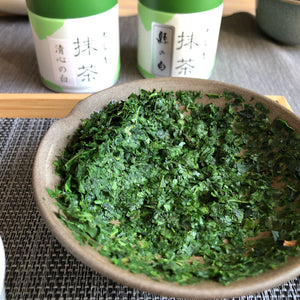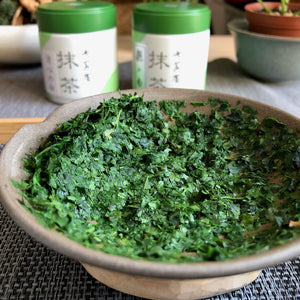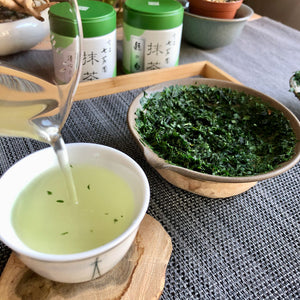
Tencha - Hatsu mukashi
Tax included
Shipping calculated at checkout
In stock
Pickup currently unavailable
Tencha - Hatsu Mukashi
A lightly brewed, sweet Japanese tea specialty: tencha is essentially the raw material for matcha before it is ground . Emerald green leaves, soft, silky cup – the character is reminiscent of both sophisticated matcha and a delicate, sweet white tea.
What is tencha?
The picked leaves are steamed , then unrolled (which makes the drink softer), the woody parts of the leaf and the stems are removed, leaving only the pure inner leaf ( tencha ). This is then ground into matcha using stone mills. Hatsu Mukashi tencha has a particularly clean, sweet finish due to the delicate shading and careful processing.
Taste experience
Light body, fresh green notes and natural sweetness; silky start, delicate vegetal notes in the middle ( spring salad , steamed leafy greens), clean, long sweet finish. The texture is reminiscent of a cross between a soft sencha and an elegant white tea.
Flavor profile – broken down
- Aroma: fresh, green, slightly sweet.
- Taste: soft sweetness, delicate herbal notes, very restrained bitterness.
- Texture: silky, light.
- Aftertaste: clean, long, sweetly green.
Preparation
Tencha leaves, due to their lack of twist, produce the most beautiful, sweet cup when steeped in slightly warmer water and for a longer period of time .
Recommended (for a soft, sweet cup)
- Dosage: 2–3 g tea / 250 ml water
- Water temperature: 85 °C
- Soaking: ~2 minutes
Alternatives
- Lighter: 75–80 °C, 1–1.5 minutes – with even fresher green notes.
- Cold brew: 6–8 g / 500 ml cold water, 4–6 hours in the refrigerator, can be consumed immediately after filtering.
The guidelines are a starting point – adjust the dosage and time to your own taste.
Culinary idea (optional)
At the end of the tea drinking, the leaves can be used gastronomically : tossed with a little soy sauce and rice vinegar as a salad, sprinkled on top of cooked rice, or mixed into light dressings.
Unpacking and storage
- Packaging: 30 g, in an aroma-sealed bag.
- Packaging: Packaged in Japan, refrigerated.
- Storage: Store in a cool place, protected from light and moisture; reseal carefully after opening.
Origin and creator – Horii Shichimeien (Uji)
Horii Shichimeien is one of the oldest teahouses in Uji (Kyoto). “Shichimeien” means “seven great tea gardens” – of these, Okunoyama is the only one left in the Uji area, managed by the Horii family. The family has been involved in the entire chain from cultivation to grinding for 600 years; the 3rd generation Horii Chōjirō is credited with the introduction of tencha-ro , the tencha drying kiln, which determined the development of Ujii processing.
We recommend it in pairs
It's also worth trying the Hatsu Mukashi matcha version - the stone-milled, powdered version of the same leaf material.
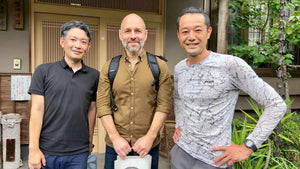
Personal contact
Our teas don't come from wholesale warehouses or unknown sources. We travel to the small producers we source from – whether it's a Japanese family tea garden, a Chinese mountain village or an oolong maker in Taiwan.
Stories
We meet them in person, learn their story, see how they care for their plants, and how they process the fresh leaves.
These experiences are the soul of our teas. This way, not only is the quality guaranteed, but also the fact that behind each cup there is a real person, a real story.
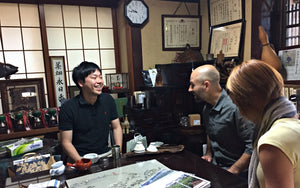

Direct
This direct relationship is valuable to us. Not only because of the excellent tea, but because we believe that trust, respect and personal presence are what make the tea drinking experience truly special.
Teavolution Tea Blog
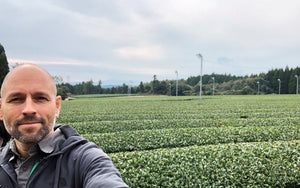
Oct 2, 2025
Sencha tea
Read more

Sep 21, 2025
Matcha hiány Japánban
Read more
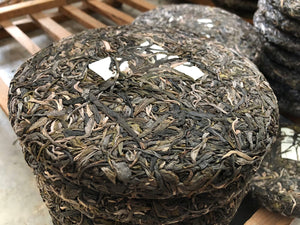
Mar 18, 2025
Puer tea, puerh or pu-erh
Read more
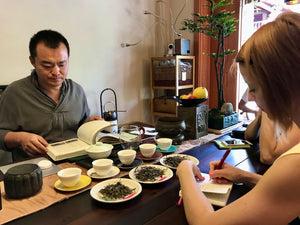
Mar 18, 2025
Types of tea
Read more
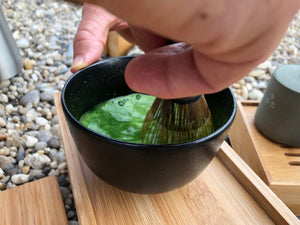
Mar 18, 2025
What is matcha tea?
Read more

Mar 18, 2025
Oolong tea (Wulong tea)
Read more

